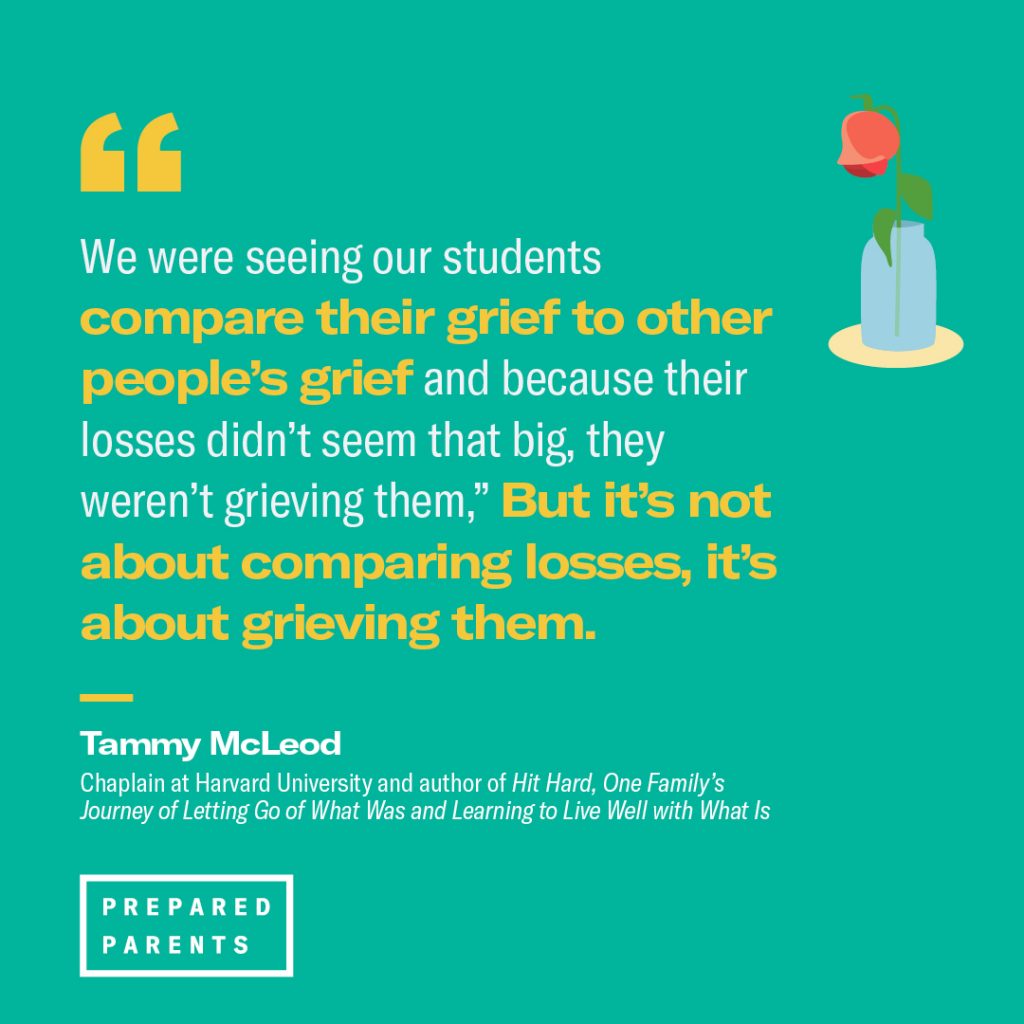They say hindsight is 20/20. For many of us, we’re glad to see 2020 in the rearview mirror! It was a disorienting year, and we found it tough to process our emotions with so much upheaval in our lives and in our world.
Some of those difficult emotions come from ambiguous loss—the mourning of the intangible. Dr. Pauline Boss first coined the term to define the relational disorder caused by the lack of facts surrounding the loss of a loved one, but during the COVID-19 pandemic we all experienced some form of ambiguous loss.
Two types of ambiguous loss:
- Type One: physical absence with psychological presence.
A loved one is physically missing or bodily gone. This includes absent parents due to divorce, adoption, and immigration. - Type Two: psychological absence with physical presence.
A person is present physically, but not emotionally or cognitively.
Tammy and Pat McLeod, authors of Hit Hard, One Family’s Journey of Letting Go of What Was and Learning to Live Well with What Is, experienced Type Two when their son, Zach suffered a traumatic brain injury during a football scrimmage. “My person didn’t die. We still have Zach, but we don’t have him in the same way,” says Tammy. “The big thing with ambiguous loss is that there’s no linear process of letting go. Rarely is there acceptance and there’s never closure because it’s about having and not having.
“When COVID hit I thought, now the whole, entire world is going into ambiguous loss. We have our co-workers, but we don’t have them the same way. We have our family members, but we don’t have them the same way. We have our friends, but not in the same way because we’re not gathering. Everything has changed.”
Step 1: Find what is lost
Tammy is a chaplain at Harvard University in Cambridge, Massachusetts and has found that this lost and found activity works with her students. She suggests trying it at home with your kid:
- Grab two clean, empty jars.
- Label one jar “What did I lose?”
- Label the other jar “What did I find?”
- Write the responses on slips of paper and place them into the corresponding jars.
- Schedule a family meeting to share your responses.
Tammy discovered that the students realized they had suffered losses in the disruption to their lives, but they also recognized they liked a lot of what’s happened during the pandemic. “The lost and found jars is a very practical way to put ambiguous loss into context.”

Step 2: Find resilience in the midst of loss
The Lost and Found activity above helps to normalize ambivalence, one of the five ways to be resilient in ambiguous loss. Tammy reminds us, “There’s nothing wrong with saying, ‘this stinks.’ You may feel bad expressing it, but it’ll take the pressure off of you.”
The other ways to build resilience are:
- Revise attachment
Let go of how you used to connect with family and friends and get creative. One grandmother made a slideshow for her grandchildren documenting the family’s journey to America. Your kid can do something similar through collecting oral histories with the UNBOXED Project The Book of Time. - Find meaning
If you tried the lost and found activity, now’s the time to take a look at what your family found. It’ll confirm that you’ve enriched yourselves and your kids have developed skills and habits that will serve them for a lifetime. - Temper mastery
“We think we can solve everything, fix everything, cure everything, but we actually can’t.” says Tammy. But that doesn’t mean you can’t try things. What’s sparking an interest for your kid? Give it a try. No one expects perfection, but when your kid follows their curiosity it can lead to all kinds of realizations about what interests them. It’ll put your kid on the path to finding purpose. - Discover new hope
Tammy explains, “I believe in Heaven, so I know one day I’ll see Zach in perfect health again. That’s awesome, but it’s not really helpful to me today. I need hope right now because I have a lot of crap to deal with. We need something right here in the middle of what we’re going through. I find that through the practice of Examen.”
Tammy’s evening check-out has her reviewing her day and asking, what was life giving? What was life thwarting? “I’ve been doing this every day for years. It’s actually really good because I can see the hope breaking through.”
Step 3: Find relief in ritual
Six years after Zach sustained his injury, the McLeod’s invited friends, family, and colleagues to an event where they could publicly remember and mourn their losses together. Too often they’d celebrated hopeful and positive circumstances without acknowledging the reality of their situation. “We’d both become convinced of the importance of an event to collectively process our grief,” Tammy explains.
Rituals build strong family bonds and are meaningful markers that confirm what’s significant to us. They give us a sense of belonging. They can be equally beneficial in helping us acknowledge what’s been lost in situations where it’s not always easy to do so.
Read more about the McLeod family here.
“Rituals create a social space for unrestrained expression of emotions and for active connection with our personal social network that enhances social support and resonates with joys, appeases pains, shares hopes, and mourns the truncation of dreams.”
—Pauline Boss
Author, Loss, Trauma, and Resilience: Therapeutic Work with Ambiguous Loss

